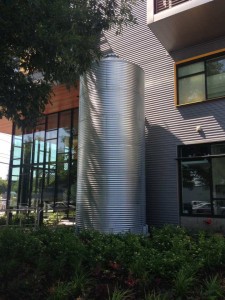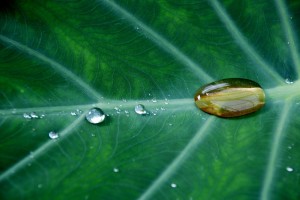 Can Rainwater Collection Protect Water Supplies?
Can Rainwater Collection Protect Water Supplies?
As mentioned in Ken Blair’s previous article, rainwater collection for residential and commercial construction helps protect our water supplies by using rainwater for irrigation, toilet facility, and other uses.
For example, the city of Federal Way, WA uses a rainwater collection system for its school maintenance facility. It collects rainwater for washing its school bus fleet, and during the summer, the collected water is used for irrigation.
In Harvesting Nature’s Supply, ARCSA (American Rainwater Catchment Systems Association) board member, Neal Shapiro writes about a city library using rainwater collection for toilet flushing, Santa Monica’s first municipal building to implement rooftop rainwater harvesting for indoor use.
Shapiro, watershed management program coordinator for the Office of Sustainability and the Environment for the city of Santa Monica, CA, goes on to document the library’s rainwater harvesting system, showing how rainwater can be collected on site for non-potable use in a commercial setting. This approach promotes the use of “local water resources and local self-sufficiency; reduces dependence on imported potable water, which benefits distant watersheds by keeping more water there; and reduces negative impacts from stormwater, which carries numerous pollutants to Santa Monica Bay”.
To read the full article, published on eStormwater.com, please click here.



 Many new commercial construction projects are implementing stormwater management into their architectural designs, rather than simply meeting new regulations. Building designers and owners are showcasing their commitment to conservation, and incorporating functionality with aesthetics, in turn, this practice furthers customer and general public interest in conservation and rainwater collection, creating even more public awareness of the need for conservation and sustainable living practices.
Many new commercial construction projects are implementing stormwater management into their architectural designs, rather than simply meeting new regulations. Building designers and owners are showcasing their commitment to conservation, and incorporating functionality with aesthetics, in turn, this practice furthers customer and general public interest in conservation and rainwater collection, creating even more public awareness of the need for conservation and sustainable living practices.

 Significant, economic, social, and environmental benefits can be achieved by collecting, storing, and using rainwater. According to the
Significant, economic, social, and environmental benefits can be achieved by collecting, storing, and using rainwater. According to the